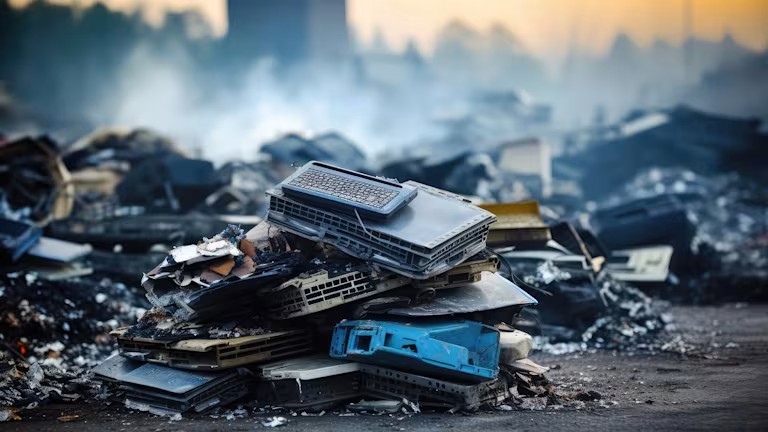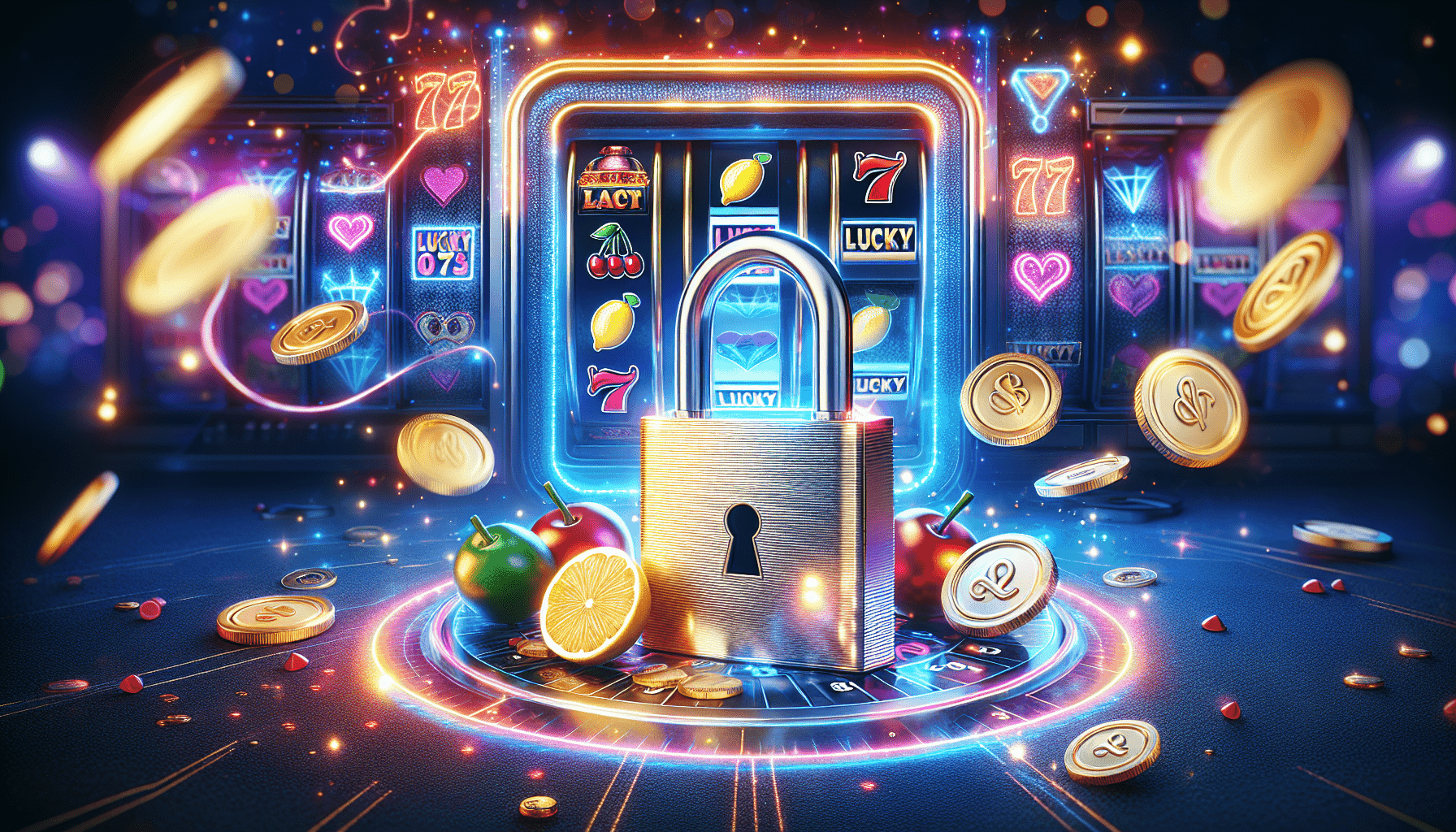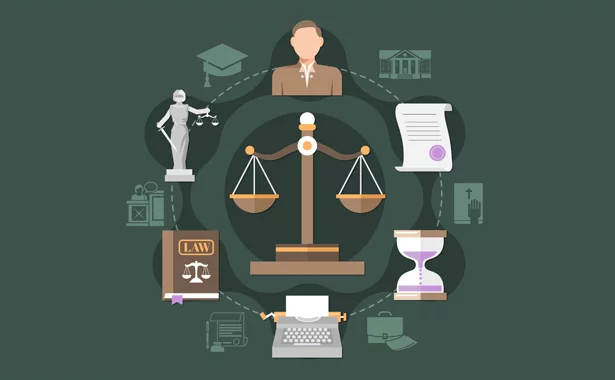Blog
Underwater:3u1qizs_9ra= Ocean

Introduction
The ocean, covering more than 70% of the Earth’s surface, is vast and mysterious. It encompasses immense beauty, a multitude of life forms, and many wonders yet to be uncovered. For some people it is all adventure while for others it represents discovery or tranquility among many other things. This blog post will focus on the ocean’s unique ecosystems as well as its astonishing creatures that inhabit them and their critical role in our planet’s health and wellbeing. We hope this guide gives you valuable insights into our seas whether you are an enthusiast yourself or just curious about what lies beneath.
The Importance of Oceans in Our Ecosystem
Oceans are not simply large bodies of water; they serve as vital components that keep earth’s ecosystem functioning properly. They function like a giant climate regulator by absorbing carbon dioxide from the atmosphere along with heat thus helping stabilize global warming trends over time. They also produce a significant amount of oxygen through photosynthesis performed by abundant phytoplankton present within these waters which is essential for survival among all aerobic organisms including humans.
These marine environments host countless species most still unknown to science today but have complex interconnections between them where every single one plays a part towards maintaining balance among living beings on earth. Coral reefs provide habitat shelters for numerous small marine creatures while larger predators control populations of smaller ones.
Our oceans’ health directly affects our world’s overall wellness because pollution overfishing climate change threaten marine life therefore humanity too needs to protect these habitats if we want to ensure welfare not only for ourselves but also other inhabitants living here together with us.
The Mystery of Ocean Depths
Often referred to as the deep sea, ocean depths are some of Earth’s least explored areas characterized by high-pressure conditions coupled with low temperatures complete darkness making them very hostile places indeed despite this life still manages somehow survive even under such extreme circumstances due mainly genetic mutations found within certain species allowing them become adaptable enough cope better than others do when exposed constantly long periods times without sunlight at all so they have evolved special features which enable those individuals live longer lives than usual would otherwise expect based solely upon average lifespans typical members same type families belonging different taxa groups etc
Coral reefs are not only beautiful, they also play a key role in marine ecosystems. They provide food and shelter for many marine species including fish, crustaceans and mollusks. The reef protects coastal areas from erosion by absorbing wave energy as well as reducing storm impacts.
Sadly enough coral reefs face threats due to various human activities like pollution, overfishing and climate change which are destroying the environment where these creatures live. Ocean temperature increase together with acidification are particularly dangerous for corals leading to widespread bleaching incidents thus causing decline in health among reefs communities at large scale. Therefore Conservation efforts such as implementation of marine protected areas or using sustainable fishing practices must be done if we want to save this important ecosystem.
The Role of Mangroves and Seagrasses
Two main parts make up coastal ecosystems: mangroves and seagrasses that offer many ecological benefits within them . Mangrove trees grow in intertidal zones where salt water can reach its roots; their complex root systems provide habitat for different types of wildlife including fish crabs shrimps etc., while stabilizing shorelines against erosion caused by waves crashing onto beaches during storms thereby protecting land from being washed away into sea which could lead to loss habitats suitable enough for living both terrestrial animals higher up banks adjacent rivers estuaries deltas swamps lagoons etc.. On the other hand underwater flowering plants called seagrasses create thick meadows found at shallow depths close near coasts providing food homes even nurseries most especially endangered species like dugongs sea turtles among others besides contributing carbon sequestration processes through absorption CO2 atmospheric storage biomass sediments.
Human activities such as coastal development pollution climate change threaten both mangrove forests seagrass beds so it’s vital protect them maintain healthy resilient oceans.
Marine Life Diversity
The ocean is home to an amazing variety of life from tiny planktonic organisms all the way up giant whales which are considered biggest animals ever existed planet earth. Marine life has adapted different environments ranging sunny surface layers down dark icy cold deep abyssal trenches surrounding ocean floor miles below sea level .
Planktons including phytoplanktons zooplanktons form basis marine food webs being primary producers converting sunlight into chemical energy via photosynthesis thus providing sustenance larger higher trophic levels i.e carnivorous fishes seabirds etcetera.
Fishes have thousands species occupying diverse habitats such coral reefs continental shelves open seas deep waters pelagic zones abyssal plains hydrothermal vent communities Antarctic polar regions tropical equatorial warm temperate regions all around globe tropics.
Pollution and Its Effect on Marine Life
Marine ecosystems are highly threatened by pollution that impacts various forms of life within them. Particularly, plastic has drawn a lot of attention because it is found everywhere in oceans and affects many marine creatures.
Sea turtles and fish often mistake plastics for foods leading to swallowing or entangling with them. Consuming these materials can cause physical injuries such as blockages which may lead to death among aquatic organisms. Also microplastics have been detected in several sea creatures raising fears about their possible effects on food chains as well as human health.
Oil spills, agricultural runoff, industrial waste are some examples that show chemical contamination also poses significant dangers to ocean environments. Toxic substances may accumulate within bodies of aquatic animals resulting in illnesses while lowering reproductive efficiency rates at the same time. Furthermore, pollutants disrupt fragile balances existing within marine ecosystems causing reductions in biodiversity levels along with overall ecosystem wellbeing.
Noise from ships or industries disturbs behaviors/communications among oceanic creatures like whales/dolphins who depend on sound navigation systems due to loud military sonar activities too.
The Importance Of Marine Protected Areas
Marine protected areas (MPAs) refer specifically designated parts of oceans where human actions are regulated so as conserve diversity among different kinds living things found underwater including ecosystems themselves . In addition ,MPAS serve crucial functions when it comes protecting endangered species , conserving vital habitats and maintaining healthiness/resilience throughout whole marine environments .
Fish populations can be replenished by providing safe places for breeding/nourishing which will result into spillover benefits towards adjacent regions . Moreover they shield important environments like coral reefs/mangroves/grasses meadows that support various underwater organisms while offering essential ecosystem services .
Collaboration between governments/local communities/scientists/conservations organizations is required during establishment plus management processes concerning MPAs . Long-term success regarding conservation efforts aimed at safeguarding underwater biodiversity coupled with supporting sustainable fisheries heavily relies on efficient management practices alongside law enforcement strategies within MPAs .
Sustainable Fishing Practices
Healthy fish populations depend upon sustainable fishing practices which maintain thriving maritime ecosystems . Fish stocks have decreased due overfishing combined with destructive fishing methods damaging oceanic habitats .
Fishing communities’ needs must be balanced against conservation needs if sustainable practices are to succeed . This requires scientific assessment based catch limits , selective gear usage designed reduce bycatch , protection spawning grounds critical habitats inclusion .
Consumer choices play a major role regarding sustainability promotion through fishing . When individuals opt for seafood sourced sustainably they endorse responsible fishing methodologies while aiding ecological preservation initiatives targeting oceans .
Ocean Conservation Initiatives
Future generations will inherit healthier oceans filled with more varied life thanks mainly due to successful ocean conservation efforts undertaken today Conservation organizations engage in policy advocacy habitat restoration public education scientific research all contribute equally towards this goal .
Support for ocean conservation can be shown in many ways. This includes reducing plastic use, supporting marine organizations and taking part in beach cleanups.
The Future of Our Oceans
The future of our oceans depends on what we do today to solve the problems affecting marine ecosystems. Climate change, pollution and overuse of marine resources are major threats that need immediate action and cooperation.
Technology, scientific research and conservation projects give hope to the future of our oceans. By using sustainable practices, protecting critical habitats while minimizing environmental impact we can help keep the seas healthy for generations to come.
Everyone has a role in conserving the ocean — whether it’s individual actions or backing conservation groups or promoting policies which protect marine ecosystems. We can make a difference together and secure a sustainable future for our oceans.
Conclusion
Our planet contains an astonishing body of water known as the ocean that provides countless benefits while sustaining different life forms. It is important to understand how valuable these ecosystems are as well as their challenges so they can be conserved and protected.
We must explore its wonders if we want to develop deeper appreciation about beauty found within this vast entity called “the sea.” At times like this when things seem bleakest there arises greatest urgency towards acting upon preservation efforts aimed at safeguarding such invaluable resources.
Everyone plays a part either through personal initiatives community-driven programs or by contributing towards conservation organizations’ goals geared towards ensuring healthy sustainable oceans for all living things dependent on them including ourselves Lets join hands in protecting not just our future but also those amazing beings living underwater with us!
Blog
RS 149 Bear Jumpsuit – Adorable & Practical Babywear

When it comes to dressing your little one, comfort meets cuteness with the RS 149 Bear Design Long-Sleeve Baby Jumpsuit from The Spark Shop. Parents often find themselves stuck between an array of baby clothing options, but what stands out more than soft, stylish, and practical wear combined?
If you’re looking for a piece that combines adorable aesthetics with practical functionality, then this jumpsuit is going to be your new favorite. And guess what? It’s not just about the looks—it’s about ensuring your child stays comfortable throughout the day.
But why is this jumpsuit so special? Stick around, because I’m about to unpack all the reasons why this product could be your answer for style and ease in your little one’s wardrobe.
Key Takeaways
- “Bear Design” for added cuteness blended with a versatile look for every occasion.
- Soft, breathable fabric ensures your baby’s comfort all day.
- Perfect for every season due to its long-sleeve design.
- Easy care, durable material—because we know parenting is already enough work!
If finding a stylish yet simple-to-maintain outfit sounds like a dream, this jumpsuit checks all your boxes!
Product Features
When buying clothes for your baby, there are plenty of things to consider—skin sensitivity, durability, and of course, cuteness! The RS 149 Bear Design Jumpsuit delivers on all fronts.

Key Features Include
- Adorable Bear Motif: The cute bear design adds a playful charm, making this jumpsuit photo-ready for your baby’s milestones or everyday moments.
- Premium Fabric: Made from high-quality cotton to keep your baby snug while preventing any skin irritations.
- Easy Snap Closures: No stress during diaper changes—these easy snap buttons make your life so much easier!
- Durable Design: Built to last wash after wash while maintaining its softness and adorable look.
Imagine this jumpsuit becoming your little one’s go-to outfit for family outings, or a snuggly companion for those cozy at-home days.
Expert Insight: “For baby wear, it’s all about finding breathable fabric and avoiding harsh materials. Cotton is always my go-to for sensitive skin,” says pediatric fashion consultant Dr. Ananya Kapoor.
Size and Fit
Because babies grow faster than we can blink, getting the right fit is crucial!
Here’s a handy size chart to make your shopping easier:
| Size | Age Range | Height (cm) | Weight (kg) |
|---|---|---|---|
| 0-3 M | 0-3 Months | 50-60 | 3-5 |
| 3-6 M | 3-6 Months | 60-70 | 5-7 |
| 6-12 M | 6-12 Months | 70-80 | 7-9 |
| 12-18 M | 12-18 Months | 80-90 | 9-11 |
Pro tip? Always opt for a slightly larger size to give your baby room to grow and ensure longer usability.
Care and Maintenance
Raising a child comes with endless chores, and the last thing you want is a high-maintenance outfit. That’s why this jumpsuit is designed with simplicity in mind.
Here’s how to care for it:
- Wash on a gentle cycle using baby-friendly detergent.
- Air dry to ensure longevity, though it’s dryer-safe on low heat.
- Avoid using harsh bleach or chemicals that could irritate your baby’s skin.
With these easy care instructions, you can trust that the jumpsuit will look and feel as good as new for months to come.
Customer Tip: “I’ve washed it so many times, and it’s still as soft and adorable as day one!” — Meera, Chennai
Customer Service and Support
At The Spark Shop, we pride ourselves on making your shopping experience smooth and enjoyable. Whether you have questions about sizing, delivery, or care tips, our dedicated team is here to help.
Reach us via:
- Email: support@thesparkshop.in
- Chat: Available 24/7 on our website.
Have concerns or feedback? We’d love to hear from you—we’re always listening to make your experience better.
FAQs
1. Does the jumpsuit come in other colors or designs?
Yes, we offer a range of colors and animal-themed designs. Be sure to check our catalog for the latest collection.
2. Is this jumpsuit suitable for cold weather?
Absolutely! Thanks to its long sleeves and soft fabric, it’s perfect for layering on chilly days.
3. Is the material suitable for sensitive skin?
Yes, the cotton fabric is gentle and hypoallergenic, perfect for your baby’s delicate skin.
4. What’s the return policy?
We offer a hassle-free 30-day return policy if you’re not satisfied with the product.
5. How quickly will I receive my order?
Orders within India typically arrive within 3-5 business days.
Need more info? Drop us an email, and we’ll make sure to resolve all your concerns.
Make Parenting Easier While Dressing in Style
Parenting comes with more decisions than you could’ve imagined, but dressing your baby shouldn’t be complicated. The RS 149 Bear Design Long-Sleeve Baby Jumpsuit is the ideal blend of practicality and cuteness for modern parents.
Whether it’s their first playdate or naptime at home, this jumpsuit ensures your baby stays stylish and comfortable. But don’t just take our word for it—experience the convenience and charm for yourself!
Blog
E-Waste Crisis: The Gadgets We Toss and Their Impact on Our World

Did you know millions of old phones, computers and other electronics are thrown away every year? It’s a huge environmental problem. This growing issue is called e-waste or electronic waste.
Every time we throw away an old gadget, we’re adding to a problem that affects our planet, our health and the people who have to deal with all that trash.
But what exactly is e-waste and why is it so bad?
Let’s get into it.
What is E-Waste?
E-waste is all the electronics we get rid of; imagine every time someone upgrades their phone or computer – their old device ends up in the trash.
But e-waste isn’t just about our old phones and computers; it’s TVs, washing machines and even some toys.
As technology gets cheaper and better, people keep upgrading and creating a lot of e-waste. The problem is – these devices aren’t always disposed of properly and that’s causing some big environmental problems.
How Much E-Waste Do We Create?
In 2022, we produced about 62 million tons of e-waste – to put that in perspective, that’s 1,000 laptops per second! And only 20% of that waste is recycled properly.
The rest ends up in landfills, dumps, or gets burned and releases harmful chemicals into the air, soil and water.
- Europe: 16.2 kg per person per year.
- United States: 13.3 kg per person.
- Africa: They generate less but receive e-waste from other countries and it affects their environment.
Why is E-Waste Bad?
Electronics contain chemicals and metals that don’t belong in the ground or our waterways. When e-waste sits in landfills or gets burned, these toxic substances leak out, including lead, mercury and cadmium.
These are harmful to humans and animals; when humans are exposed to these chemicals, it can cause serious health problems, lung problems, cancer and developmental issues in children.
People in developing countries where most of the world’s e-waste is dumped are especially vulnerable.
They often work with no protective gear to break down old devices. This exposes them to harmful substances that can cause long term health problems.
What Can We Do to Reduce E-Waste?
To solve the e-waste crisis, we all need to change how we buy, use and dispose of electronics.
Here’s what we can do:
- Think before you buy: Do you really need the latest device? If your current gadget still works, keep using it a little longer.
- Repair, don’t replace: Fixing a broken screen or replacing a battery is often cheaper (and at least more environmentally friendly) than buying new – and it reduces waste.
- Recycle: Many stores have recycling programs, where you can drop off old devices.
- Donate or sell: If it still works, donate or sell it. Someone might need it!
Are Companies Helping Out?
Some companies are trying to reduce e-waste – Apple has recycling programs and Samsung has repair options.
But not all are as committed.
Many still push customers to upgrade every year and increase e-waste. So, support brands that repair and recycle!
And remember when selling or donating old devices to use a VPN (Virtual Private Network) like Surfshark to protect your data from hackers when online.
What’s the Future of E-Waste?
Experts say e-waste will continue to grow as we buy more gadgets.
But if we recycle more and companies make gadgets last longer, we can slow down the growth of e-waste.
Another big trend is the “right to repair” movement, which demands companies make it easier for us to fix our devices instead of replacing them.
Personal Choices: What Can You Do?
You don’t even have to be an adult or someone of financial means to make a difference with e-waste. Here’s how you can help:
- Limit upgrades: If your current device works fine, don’t upgrade yet!
- Educate others: Share this with friends and family.
- Choose eco-friendly brands: Support brands that repair and recycle.
- Get creative with old gadgets: Instead of throwing away an old phone, use it as an alarm clock, music player, or even a home security camera.
Conclusion
While e-waste is a big problem, there’s a solution.
By making smarter choices on the gadgets we buy and how we dispose of them, we can reduce the impact of e-waste to the planet.
Companies, governments and individuals all have a role to play.
Next time you think of buying a new device, remember every gadget you don’t throw away makes a difference.
Blog
Decoding the Mystery of q.d.c. The Secret Language of Old English Abbreviations

Are you intrigued by the prospect of tracing the history of an abounded manuscript or ancient text? If so, you are in for an intriguing exploration! Today, we are going to talk about ‘q.d.c’ also known as ‘querit declamation antiquorum’ which is an old English abbreviation used to this very day. For centuries, this abbreviation has been used, from the gothic manuscripts to the present day in various disciplines.
In this post, we will learn the history of ‘q.d.c’, its impact, and changes made to it. You will further learn why this abbreviation is important in today’s world, across various fields including healthcare and, legal matters. Finally, you will appreciate why ‘q.d.c’ is relevant to one’s interests in history, linguistics, or even search engine optimisation.
Let us begin with the root and meaning of q.d.c.
The term q. d. c which means resume or rest should really this with level of assistance a huge level of organisation almost 60% of the globe is yet to be reached. As mentioned above the Ancient English meaning community is majorly used for legal or educational texts. But what does it exactly stand for?
Building it step by step.
Q.d.c comprises of few letters and all carry significance. ‘Quod demonstrandum cepit’ is quite concisely demonstrated with this abbreviation; which when literally translated depicts ‘what was begun to be demonstrated’. Its summarising aspect emphasised commencing outlines placed at all separated points in the text. Although, notes like this were mainly utilized by scholars and clergymen, they were able to construct tremendous texts in a brief manner eliminating busy work.
The Role of q.d.c. in Manuscripts
In the medieval period, when the manuscripts were to be produced in a greater number, monks would take the work of copying them in the scriptoria even by hand. Scribes and copyists would have to work harder and use short hand to abbreviate words in order to use less parchment or vellum only the most pertinent information would be carved for mass drafting of the manuscripts. These pithy statements would serve as useful memory triggers in religious, philosophical, or even legal texts.
An Ancient Tool for Modern Readers
Despite being perceived as an archaic phrase, ‘q.d.c.’ is worthwhile to take our time to process, as it will only help better in interpreting specific historical documents. Through these tools, one can appreciate how societies of the past were brainy in their quest to compile as well as disseminate information.
Historical Significance and Evolution
Not only does the abbreviation q.d.c. is interesting only from a linguistic viewpoint, but it has a lot to share about the evolution and development of language along with modes of communication during the bygone times.
A Glimpse into the Past
The oldest branch of the modern English language with which people interact today, Old English, was full of abbreviations. Such shorthands would come in handy to cope with complex spheres, especially due to the fact that the bulk of copying was done by hand. The Q D C would be an ideal demonstration of how people and scholars expressed their thoughts in summary fashions while still ensuring that their ideas or thoughts were understood easily.
Transformations Over Time
Of course, as time progressed and languages transformed the other additional forms of languages, such as use of abbreviations started gaining roots. An English phrase, “q.d.c.” found itself from Old English, latinated, with the funny noticeably purposive addition of Read Latin This was turning point as the term perception inherited the culturally profound time periods around it.
Connecting Time Periods
Analyzing materials like “q.d.c.” allows researchers to relate with the past intelligentsia of civilizations, as this and similar lines were used through out history the underlying motives of research and communication have been inherited one way or another.
Using q.d.c. in Today’s World
Even though they may have a historical origin, “q.d.c.” finds application in multiple arenas of our modern day society.
Medicine and Science
Precision is key in medicine, there are absolute amendments which require absolute clarity wording, alongside which the scientific literature would include “q.d.c.” these stand to forward. write summative statements of…… or these are the conclusions which need to be drawn. Over time these words that speak in vagueness will help professionals deal with much more complex papers and studies than these.
Literature and Academic Writing
In academic papers, there is no sun for writers and it’s more about cutting words while keeping the fact delivered. Hence why writers may want to do that and say “q.d.c.” and use it for conclusions and some points of an argument. Giving out terror abolition can make the reader understand and appreciate literature, or scholarly works for the matter.
Standardization of Processes Regarding Disputes
Perhaps the most notable requirement, when creating legal papers or formal contracts, is attention to the details – Elaine, Wai and Young 1998. Indeed, such legal forms transcribe a multitude of arguments and conclusions. Knowing such shorthand forms is useful to both the legal professionals and the ordinary legal text readers as it helps to understand legal documents better.
Conclusion
The abbreviation ‘q.d.c.’ as a term, is rich in history. From its early usage on Old English manuscripts up to present-day usage, this abbreviation epitomizes the effectiveness of a straightforward approach to any task. There is much to be gained by knowing ‘q.d.c.’ especially in our interface with history as well as in the quest of diverse areas in the contemporary World.
-

 Technology4 months ago
Technology4 months agoTeknologian ja Kulinaaristen Uudistusten Yhteys
-

 Business6 months ago
Business6 months agoA Deep Dive into Toto Sites: Unlocking New Online Experiences
-

 Business6 months ago
Business6 months agoCollection of links: a modern solution for streamlining legal information access
-

 Technology4 months ago
Technology4 months agoDie Zukunft der gastronomischen Innovation: N2O-Produkte und ihre Rolle in modernen Küchen
-

 Blog2 months ago
Blog2 months agoRS 149 Bear Jumpsuit – Adorable & Practical Babywear
-

 Technology4 months ago
Technology4 months agoWhich Are The Best Smartphone Security Apps?
-

 Technology4 months ago
Technology4 months agoWonderfox HD Video Converter Factory Pro: Make MPEG to MP3 Conversion Easier
-

 Blog8 months ago
Blog8 months agowallpaper:ek_xjuauh0q= preppy


